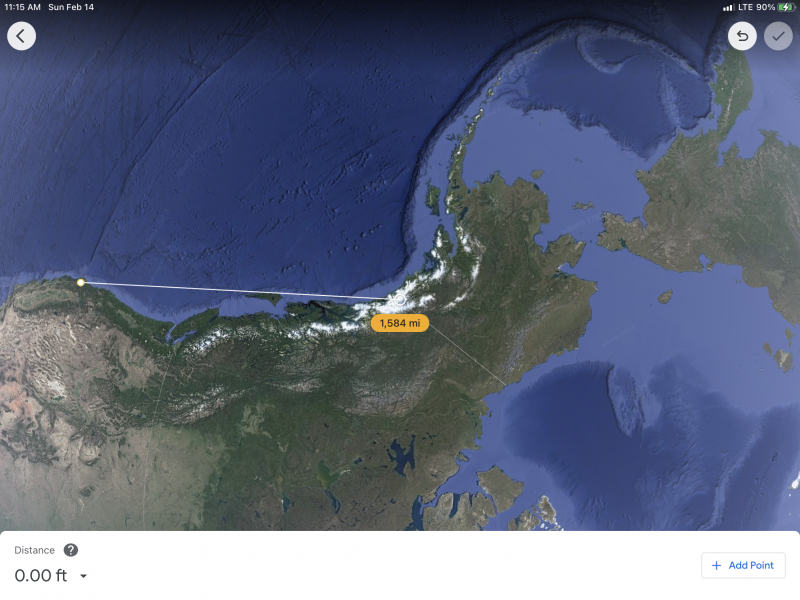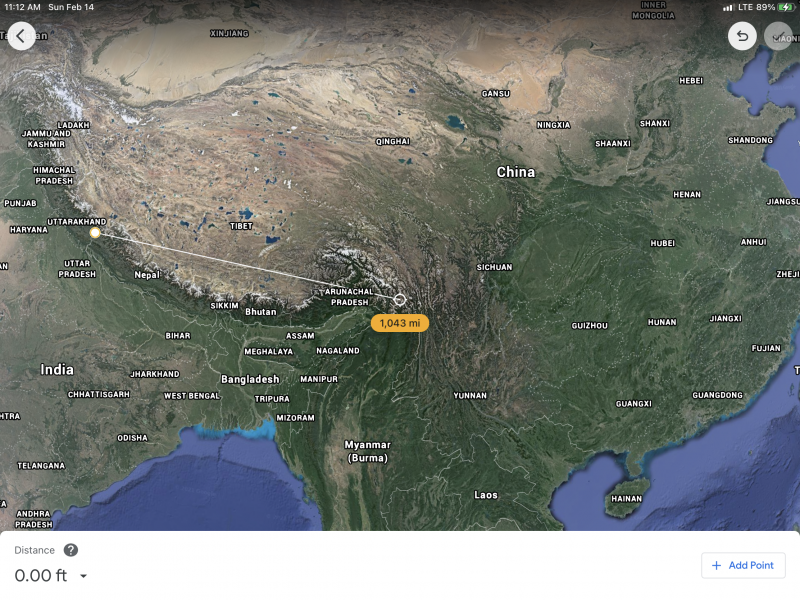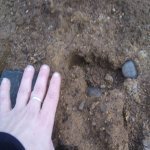Leaderboard
Popular Content
Showing content with the highest reputation on 02/14/2021 in all areas
-
Often we hear that the Yeti is more Plausible than Sasquatch. The Yeti lies in the mysterious hinterlands of the Himalayas. While the Sasquatch supposedly exists in Seattle’s back yard. But is this true? Surely the Asian crowned jewels and greatest heights in the world smashes any challenger in terms of remoteness and wildness, correct? First, if you look at each mountain range comparatively without regard to its longitude or latitude axis? A stunning fact emerges. Tall mountain ranges create rain shadows. Both mountain ranges are a semi circular crest. With the Himalayas creating the Gobi desert to the north. While the cascades create a rain shadow into the Columbia plateau which is then bordered by the western Rockies to the east. The Himalayas southern flank is populated by dense lush jungle. With moisture coming from the Indian Ocean. While the Cascades western flank is populated by dense lush temperate rainforests. With moisture coming from the Pacific. Parts of India adjacent to the Himalayas can receive 90 inches of rain per year. The parts of the US and Canada west of the cascades can receive up to 120 inches of rain per year. Nepal and Bhutan sit roughly at 28 degrees north. In comparison to North America? Corpus Christi, TX is at 28 degrees north. So the southern flanks of the Himalayas are much more close to the equator than the Cascades. Albeit the western flanks of the Cascades are much closer to the Pacific Ocean. A Yeti could have access to many species of tree fruits including Mango and Guava. While a Sasquatch could have access to many species of berries. Both areas are rich in flora and fauna with the Cascades also providing a huge boon in marine life. Lets look at Human populations. China and India are roughly 1.4 billion people EACH. (2.8 billion) Nepal is 28 million and Bhutan is 750,000. The US population is 330 million and Canada is 37 million. What about regional populations? Vancouver BC - 631,000 Seattle Wa - 761,000 Portland - 645,000 Kathmandu Nepal - 1.4 million Its hard to decipher population numbers by region. But definitely despite the growing I5 corridor? There are more people living in close proximity to the Himalayas than the Cascades. With human habitation sharply dropping off north of Vancouver BC. Bhutan is much less dense than Nepal at 28 million people to the west. So in both cases populations are not evenly distributed. Also size relation. For example. Measuring Nepal from north to south through the city of Kathmandu it is 100 miles across. Where as measuring from the pacific coast east to Leavenworth, Wa (eastern limit of mountains) through Seattle, Wa is 175 miles. The Himalayas are the tallest mountains in the world. But if measured by prominence? (Imagine cutting a mountain off at its base for comparison) Many American and Canadian flags begin to appear high on the list. https://en.wikipedia.org/wiki/List_of_mountain_peaks_by_prominence Conclusion. Does the legendary status of the Himalayas hold up? Actually looking at this comparison closely? I think the similarities far outweigh the differences. But the Cascades are every bit as wild and remote as the Himalayas. And either example is well within its capacity as a eco system to hide a large bipedal primate.2 points
-
My understanding is that glacial lakes and the vast flooding of areas due to the collapse of those lakes was a "half-baked, nonsense" idea in the early 1900s when first proposed. The scientist who proposed the theory (after some area out west reminded him of the ripples in sentiment at the bottom of a modern lake) did not see his theory accepted as scientific "fact" until he himself was in his 90s. When asked how he felt about being proven right, he said something along the lines of, "Who can I gloat to about this? All those who doubted me are dead."2 points
-
The story goes on and on about the edge that dogs gave us by hunting more efficiently, but it doesn't acknowledge that dogs helped to PROTECT us, too. They are superb warning systems. Therefore, if you are getting preyed upon, and your dogs alert you, you have time to defend yourselves. Also, they can hunt animals but also other bipedal hominids, leading you to their secret hiding places. Dogs definitely give you an edge.2 points
-
Here is a temperature graph from the last glacial maximum until today. What I would like to point out is the fact that, concerning the Holocene, our climate today is cooler than most of the last 10,0000 years. Human caused global warming is a fraud. https://en.wikipedia.org/wiki/Younger_Dryas#/media/File:Evolution_of_temperature_in_the_Post-Glacial_period_according_to_Greenland_ice_cores_(Younger_Dryas).jpg Also, within the four glacial maximums and interglacial periods earth's climate has swung wildly, sometimes with warm periods within the four major glaciations and sometimes with cold snaps within the interglacial periods. During the last, Wuerm Glaciation, there was a warm period, the Gottweig Interstadial about 45,000 years ago. It was during this warm period within a glaciation which allowed modern humans to enter Europe.2 points
-
1 point
-
Why does a yeti leave tracks in the snow at nearly 20,000' of elevation where there is no vegetation or prey? Perhaps to get to the other side of the Barun Khola mountain range?1 point
-
Good points Norse; I pretty much think of everything above xxx feet as being snow, ice, and rock. I probably also have an incorrect impression because Himalayas = Everest = snow, ice, and rock and that's sort of the "habitat" of the yeti.1 point
-
1 point
-
I recall reading Grover Krantz's book "Sasquatch Evidence" in which he postulates that the Sasquatch and the Yeti comprise the same species or at least a sub-species. His line of reasoning is that the species fills a similar ecological niche to the brown bear and both would likely share a similar range. With the Sasquatch/Yeti primate habitat stretching from the Himalayas and Siberia across the Bering Strait and throughout much of North America.1 point
-
Interesting. I wonder how many yeti encounters are reported at the altitude of the dense, lush jungles (where there would be relatively much more to eat) as opposed to altitudes in the ice/rock zone (where there would be relatively less to eat, particularly for a large omnivore or carnivore). I think that likely food availability goes as a plus under the squatch column.1 point
-
I grew up on the family farm in South Eastern Oklahoma & looking forward to networking with any & everyone who is interested in bigfoot & ALL the OTHER high strangeness that's associated with this phenomenon !1 point
-
Oh this is fun, I think you would enjoy the Fallen Worlds series weve been building over the years and releasing through Wild & Weird Radio. There's a lot of challenging theories out there now concerning the events that younger dryas and wiped out the Clovis culture as well as basiclaly every other advanced culture at the time, like those responsible for Gobekli Tepe. The Hiawatha impact crater has pretty much been solidified as well as the string impact theory as what likely caused the sudden halt in the warming period and extension of the ice age. Also the out of Africa theory has been under fire as of late again as well with human remains being found outside of africa at a much earlier date than had been previously accepted. History is being re-written slowly and dates are being pushed back on a regular scale at this point. There's even been recent evidence around the carolina bays being formed by chunks of debris and massive hunks of glacial ice being hurled through the sky from the Hiawatha impact. Give it about 15 or 20 more years and I have a feeling everything we currently think we know about human evolution and history will be turned on head.1 point
-
I always liked the one where the wife would call the chickens each day "here chickie, chickie". Then one night the husband got out of the car to open the gate in the driveway and hears a deep voice from the bushes "here chickie, chickie". This has always been unsettling to me.1 point
This leaderboard is set to New York/GMT-05:00










